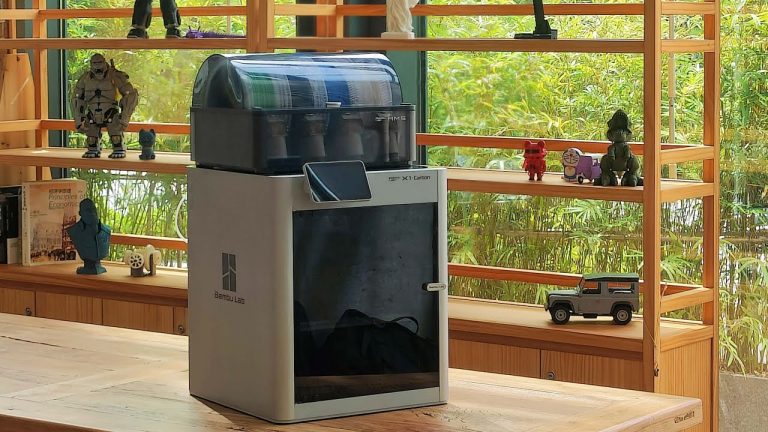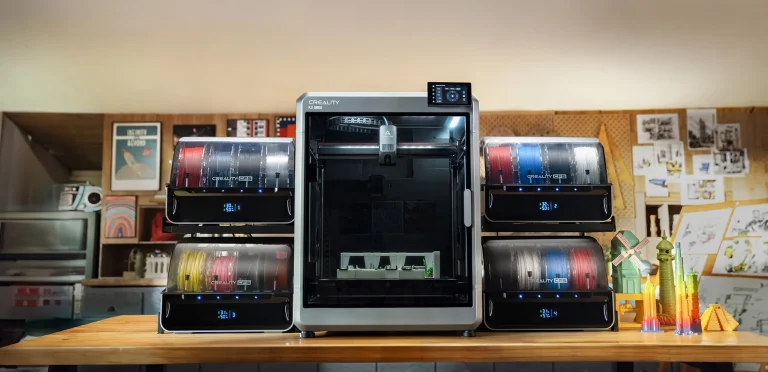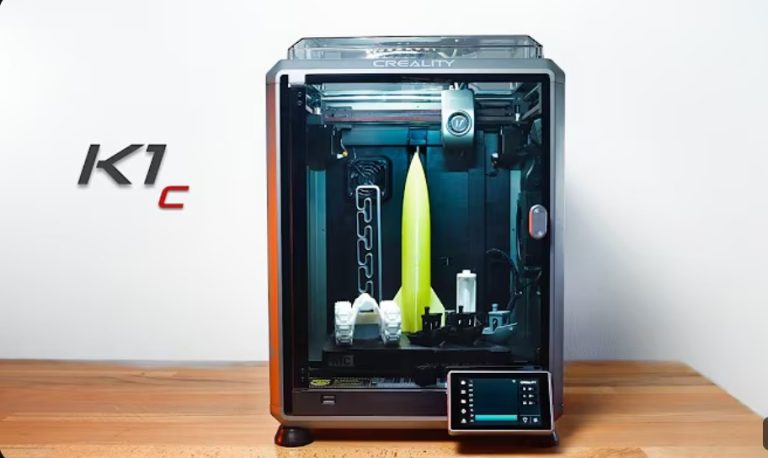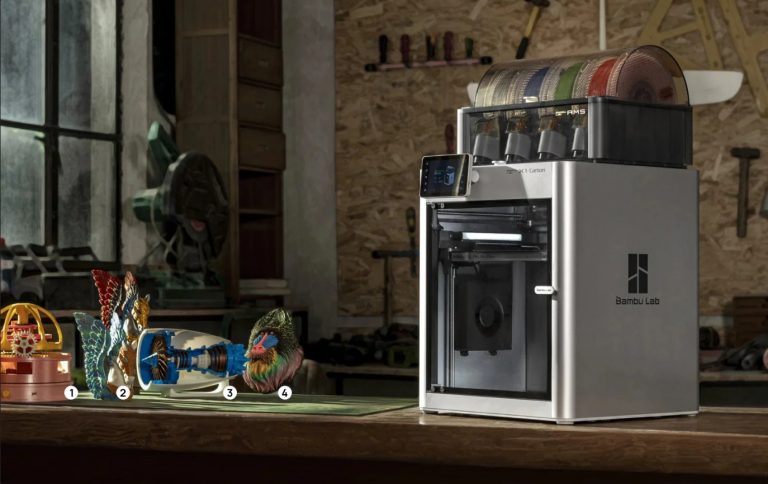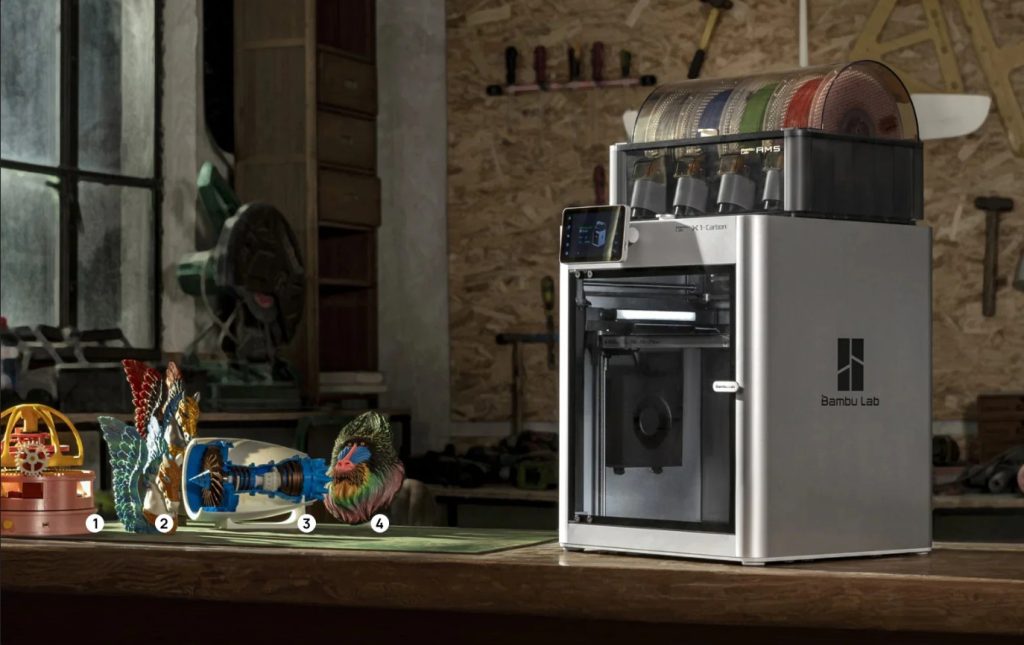
The world of 3D printing is rapidly evolving, and 2025 is no exception. Whether you’re a hobbyist, DIYer, designer, or just someone who wants to print custom toys, tools, or home decor, choosing the right 3D printer can be overwhelming. With so many brands competing for your attention—Bambu Lab, Creality, Anycubic, Elegoo, Sovol, and QIDI—how do you know which 3D printer is the best for your home?
We’ve done the research and hands-on testing to bring you a comprehensive guide to the best 3D printers for home use in 2025, combining performance, affordability, ease of use, and reliability. Let’s dive in!
What to Look for in a Home 3D Printer
Before choosing the perfect 3D printer for your home, consider these key factors:
- Build Volume: How large of an object you can print.
- Print Quality: Look for printers with high resolution (lower microns = finer detail).
- Ease of Use: Touchscreen interfaces, auto bed leveling, and Wi-Fi connectivity matter.
- Noise Level: Especially important for home and apartment environments.
- Safety Features: Enclosed chambers, filament run-out sensors, and automatic shutdowns.
- Support & Community: Reliable customer service and active user forums make a big difference.
Best Overall: Bambu Lab X1-Carbon Combo
Price: ~$1,199
Build Volume: 256 x 256 x 256 mm
Print Speed: Up to 500 mm/s
Auto Bed Leveling: Yes
Enclosed Chamber: Yes
AMS (Multi-color): Yes
Why It’s Great:
Bambu Lab’s X1-Carbon Combo is the most advanced 3D printer for home users in 2025. With lightning-fast speeds, auto calibration, AI-powered spaghetti detection, and the Automatic Material System (AMS) for multi-color printing, it’s a dream come true for makers who want professional-level results at home.
Pros:
- Lightning-fast printing with CoreXY motion system
- Multi-material & multi-color support with AMS
- Quiet and safe for indoor environments
- Outstanding out-of-box experience
Cons:
- Premium price point
- AMS adds complexity for beginners
Best Budget Option: Creality Ender-3 V3 SE
Price: ~$199
Build Volume: 220 x 220 x 250 mm
Print Speed: 250 mm/s
Auto Bed Leveling: Yes
Touchscreen: Yes
Why It’s Great:
Creality has long been known for its affordable and upgrade-friendly printers, and the Ender-3 V3 SE is no exception. The SE version comes pre-assembled, with an improved UI, silent stepper motors, and solid auto-leveling, making it perfect for beginners.
Pros:
- Extremely affordable
- Reliable community support
- Easy to assemble and maintain
- Upgrade-friendly
Cons:
- No enclosure (use caution with ABS/nylon)
- Manual filament loading
Best for Beginners: Anycubic Kobra 2 Neo
Price: ~$239
Build Volume: 250 x 220 x 220 mm
Print Speed: 250 mm/s
LeviQ 2.0 Auto Leveling: Yes
Touchscreen: Yes
Why It’s Great:
Anycubic’s Kobra 2 Neo is the ideal starting point for 3D printing newcomers. It features easy assembly, LeviQ 2.0 auto-leveling, and a solid build plate for smooth first layers. Its reliable performance and sub-$250 price point make it an unbeatable value.
Pros:
- Fast and easy setup
- Excellent print quality for the price
- Stable metal frame
- Responsive touchscreen interface
Cons:
- No direct drive extruder
- Not ideal for flexible filaments
Best for High Detail: Elegoo Neptune 4 Pro
Price: ~$299
Build Volume: 225 x 225 x 265 mm
Print Speed: Up to 500 mm/s
Auto Bed Leveling: 121-point mesh
Klipper Firmware: Yes
Why It’s Great:
Elegoo’s Neptune 4 Pro offers Klipper-based speed and quality at a very competitive price. It features a dual-gear direct drive extruder, vibration compensation, and a fast-heating PEI plate, perfect for those who want precision and speed in one.
Pros:
- Klipper pre-installed = fast + smooth printing
- Strong cooling and dual-fan system
- Great for miniatures and detailed prints
Cons:
- Slight learning curve with Klipper UI
- No enclosure
Best for DIY & Modding: Sovol SV07 Plus
Price: ~$399
Build Volume: 300 x 300 x 350 mm
Print Speed: 500 mm/s
Direct Drive: Yes
Klipper-Enabled: Yes
Why It’s Great:
Sovol continues to impress in 2025 with the SV07 Plus. It’s built for tinkerers, combining a large build volume, Klipper firmware, strong cooling, and high-end hardware, making it a great choice for serious hobbyists.
Pros:
- Giant build volume
- Direct drive for flexible filaments
- Compatible with many mods
- Excellent cooling
Cons:
- Larger footprint may not suit all homes
- No enclosure (but you can DIY one!)
Best Enclosed Printer: QIDI Tech X-Plus 3
Price: ~$699
Build Volume: 280 x 280 x 270 mm
Print Speed: 600 mm/s
Fully Enclosed: Yes
Filament Compatibility: PLA, ABS, Nylon, TPU, PC, Carbon Fiber
Why It’s Great:
QIDI Tech is a favorite for those printing with advanced materials. The X-Plus 3 is fully enclosed, AI-enhanced, and packed with features like linear rails, Klipper, and dual-z-axis stability—perfect for printing functional parts and high-temp materials at home.
Pros:
- Full enclosure improves quality & safety
- Supports exotic filaments
- Fast print speeds with CoreXY
- Klipper pre-installed
Cons:
- Heavier and bulkier
- Less portable than open-frame printers
Comparison Table: Best 3D Printers for Home in 2025
| Printer | Price | Build Volume (mm) | Max Speed | Auto-Leveling | Enclosed | Ideal For |
|---|---|---|---|---|---|---|
| Bambu Lab X1-Carbon | $1199 | 256 x 256 x 256 | 500 mm/s | Yes | Yes | Pros, hobbyists, speed |
| Ender-3 V3 SE | $199 | 220 x 220 x 250 | 250 mm/s | Yes | No | Beginners, budget builds |
| Kobra 2 Neo | $239 | 250 x 220 x 220 | 250 mm/s | Yes | No | Entry-level users |
| Neptune 4 Pro | $299 | 225 x 225 x 265 | 500 mm/s | Yes (Klipper) | No | Detail-oriented printing |
| Sovol SV07 Plus | $399 | 300 x 300 x 350 | 500 mm/s | Yes | No | DIYers, modders |
| QIDI X-Plus 3 | $699 | 280 x 280 x 270 | 600 mm/s | Yes | Yes | ABS/Nylon/Carbon Fiber |
Filament Compatibility & Use Cases
Here’s a quick guide to match your needs with the right material:
- PLA: Great for all printers; good for beginners
- ABS/ASA: Requires enclosure; strong and heat-resistant
- PETG: Middle ground—flexible, food-safe, and durable
- TPU: Flexible prints (requires direct drive)
- Nylon/PC/Carbon Fiber: Advanced materials; need enclosure and high temp
Where to Buy These 3D Printers in 2025
You can purchase these 3D printers directly from official sites, or trusted online marketplaces:
- Bambu Lab Official Store
- Creality Official Store
- Anycubic Store
- Elegoo Store
- Sovol Official Site
- QIDI Tech Store
Tip: Watch for bundle deals, free filament offers, and seasonal discounts.
Final Verdict: Which 3D Printer Is Right for You?
- Want the best of the best? Go with Bambu Lab X1-Carbon.
- Tight on budget? The Creality Ender-3 V3 SE is your friend.
- First-time user? Anycubic Kobra 2 Neo makes it easy.
- Love fast prints with fine details? Choose the Elegoo Neptune 4 Pro.
- Need a large build and mod potential? Try Sovol SV07 Plus.
- Printing engineering-grade materials? The QIDI X-Plus 3 is perfect.
More 3D Printing Resources for You
- Best Filaments to Use in 2025
- How to Set Up Your First 3D Print at Home
- Top 10 3D Models to Print Right Now
- Common 3D Printing Mistakes & Fixes
Conclusion
The best 3D printer for home in 2025 depends on your budget, experience level, and what you plan to print. From sleek machines like the Bambu Lab X1-Carbon to beginner-friendly workhorses like the Anycubic Kobra 2 Neo, the options have never been better.
